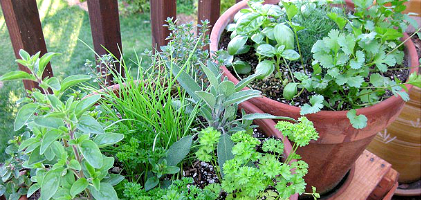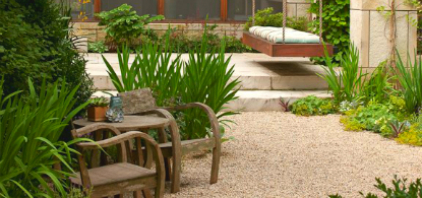
bringing nature, nurseries and gardeners together April 11, 2019
|
|
Nursery notes: Brave the elements, and drop in on at least one of the following fantastic gardening events happening this Saturday ; - ) ❦

Austin Herb Society plant sale: Saturday, 10 - 3 p.m. Zilker Botanical Gardens (2200 Barton Springs Road). With its mix of organic herbs and veggies, vendors and four free lectures, this is almost like a miniature Zilker Garden Festival. Herb Society ❦
__________________________________________________
East Austin Garden Fair: Saturday, 9 - 2 p.m. This fun, hands-on event offers creative, low-cost ideas on how to grow vegetables, herbs and fruit. Free admission, free seeds and plants, free books and free soil tests. Travis Co. Master Gar-deners: 2608 Gonzales Street.78702 TCMG ❦
__________________________________________________
Spring Native Plant Sale: Saturday, 9 - 5 p.m. Hundreds of native plants at this amazing event. Wildflower Center ❦

Eight landscape design tips: learn about the graceful sweep of a curve, the mystery of the unseen, tricking the eye, and the principal of three depths from Jan Johnsen. Garden Design ❦

Trowel & Error: at Saturday's event in beautiful Mayfield Park, expert Colleen Dieter (Red Wheelbarrow) shared useful tips about pruning perennials during the hot summer months. 'Don't forget to give them something anytime you prune them,' she said. A top dressing of compost, extra mulch or extra watering will help the plant put on its fresh growth. ❦
 
Central Texas Gardener: Michael Shoup (Antique Rose Emporium) looks ahead to new roses as tough as the Knock-Outs. On tour a visit to the garden of the Knight family, who created a landscape of food, flowers and fun. Saturday 4 p.m. Sunday 9 a.m. KLRU ❦
 Eight Activities for April
by Chris Winslow
1. Spring vegetable gardening: Plant those warm season crops. This list includes beans, black-eyed peas, okra, squash, cantaloupe, tomatoes, peppers, cucumbers, watermelon, corn, and eggplant. There's still time to plant those cooler season crops: lettuce, radishes, and carrots.
2. Fertilize your garden: Do this organically with compost. Other sources of nutrition are dried fish flakes and organic fertilizers formulated for garden use. You can also use liquid fertilizers, such as fish emulsion and seaweed extracts.
3. Control weeds: Keep them down with mulch and by weeding a little bit every day.
4. Plant spring annuals: This is the perfect time. Work some compost into your flower beds and you'll give these new plants just the food they need to flower through the summer. Some ideas: begonias, zinnias, marigolds, petunias, coleus, periwinkle, cosmos, larkspur, portulaca, and purslane.
5. Plant perennials: Choose some of your favorites from the extensive lists available, or visit your neighborhood nursery and browse. Look for the many varieties of drought tolerant and showy lantanas and salvias. Also blackfoot daisies, skullcaps, purple coneflowers, black-eyed Susan, plumbagos, columbines, rockrose, ruella, and verbena.
6. Ornamental grasses: Native varieties are best due to their heat and drought tolerance. My favorites are big muhley, coastal muhley and the maiden grasses. For a short grass in a very dry place, you might like Mexican feather grass. It is blond-colored, reaches 1.5 foot in height, and makes a beautiful accent plant that moves so gracefully with the slightest breeze.
7. Fertilize lawn: Use a slow release organic fertilizer. The 3-1-2 ratio is best. Allow 10 pounds of fertilizer for every 1,000 square feet of lawn. Mowing height should be 2.5 inches for St. Augustine grass and 2 inches for Bermuda and zoysia. I like to return the grass clippings to the turf. These clippings act as a mulch and help to reduce weeds. Water infrequently and deeply to encourage a deep root system. This practice will train your lawn grass to be more drought tolerant and help to conserve water.
8. Fertilize shrubs, trees: Mulch with a compost-mulch blend to provide nutrients and conserve water. Deep, infrequent watering of shrubs and trees will encourage deep, drought-tolerant root systems. Remember to seal pruning cuts on oak trees. It might save them from oak wilt. Happy springtime gardening everyone! ❦
|
 It's About Thyme Legacy Publications.
Contact newsletter editor Darrel Mayers with any ideas for articles or interesting links at internationalrain@yahoo.com (hitting 'reply' to this email won't work) |
|
|